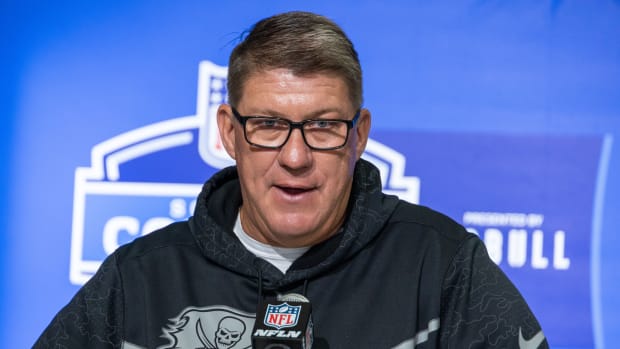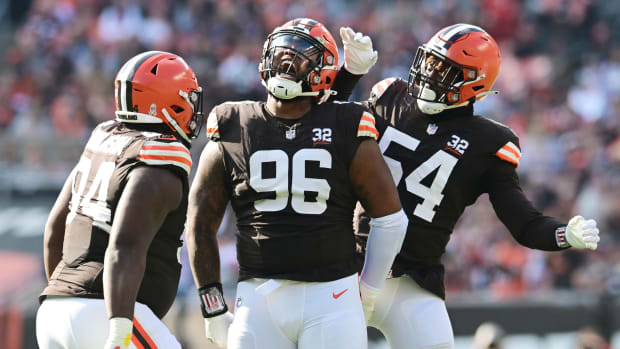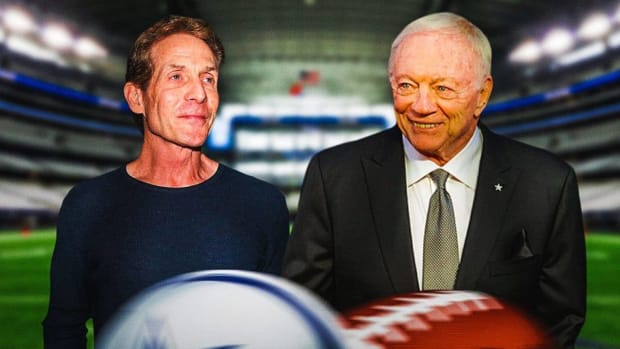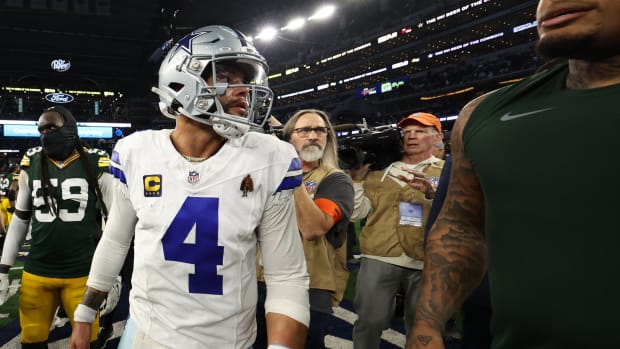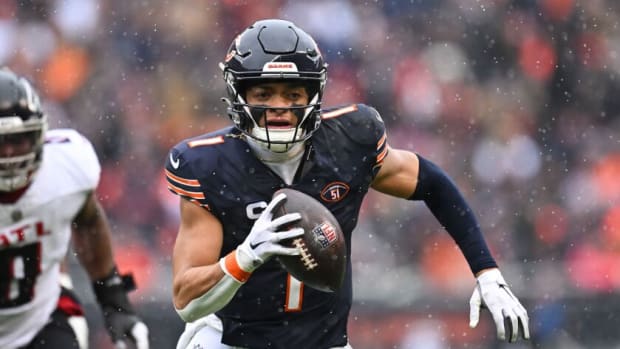Memories of covering Dennis Green through his Vikings highs and lows
Your teams. Your favorite writers. Wherever you want them. Personalize SI with our new App. Install on iOS or Android.
The Dennis Green I knew and covered for four years in the ’90s was never going to win any popularity contests with the fans or the media, not that he cared. But once you ventured into the Vikings’ locker room, you always knew you were on ground that remained ultra-loyal to Minnesota’s veteran head coach, and that proved to be a pretty wise base of support to cultivate in the NFL.
Almost without exception, Denny’s guys loved playing for Denny, and not just because they were winning and going to the playoffs almost annually in his 10-year Vikings tenure (eight postseason trips from 1992 to 2001). Green, who passed away Thursday night at 67, was beloved because of the way he treated his players with respect and restraint, the way he put them into position to succeed, and the way he found new and inventive ways to ease them through the long slog that is an NFL season. If that all sounds easy enough, know this: It isn’t.
In short, those star-studded Vikings teams that I covered for first the Minneapolis Star Tribune (1996–98) and then the St. Paul Pioneer Press (1999) knew Green could coach, and that his methods were proven and solid. So even if the rest of the NFL world too often saw the side of Green that could be combative or condescending, with him playing the role of his own worst enemy at times, the target audience that really mattered, his players, never lost faith in his leadership.
• SI Vault (1992): Rookie head coach Green has sold the Vikings on hard work
Which is a remarkable feat given all that unfolded in those always newsy seasons that I spent on the Vikings beat, when Green was often in the center of one firestorm or another. Whether it was his early one-and-done playoff failures, his controversial 1997 autobiography attacking the team’s ownership in a seeming act of career suicide, his “risky” drafting of Randy Moss in 1998, or the front-office power plays he executed early on in owner Red McCombs’s tenure, Green was a walking, talking lightning rod for most of his time in Minnesota. But the drama never seemed to wear him down, and he kept that “us versus the world” illusion alive in the locker room for his players to feed off of.
Covering Denny was never easy and sometimes tedious, but it was always entertaining. I’ve often thought I could—and should—write a book about those four seasons, which like dog years, were worth about a dozen in terms of my NFL beat man education.
Virtually everything that can happen to a team unfolded in Minnesota from 1996 to ’99, including the sale of the franchise, a near-certain Super Bowl season derailed, huge plot twists at quarterback (I covered Warren Moon, Brad Johnson, Randall Cunningham, Jeff George and Daunte Culpepper in that short span), the Moss phenomena, the saga of a bipolar Dimitrius Underwood disappearing from training camp in ’99, Green’s ill-timed book and so much more I can’t even begin to detail it all. And a year after I left the beat for the job I currently hold came the Korey Stringer tragedy, and all that ensued in that sad story.
Green had that befuddling and rambling style of talking that was hard to make sense of at times, and years later, when he exploded in that priceless postgame tirade in Arizona in 2006—“The Bears are who we thought they were”—I wasn’t surprised in the least by it. It was vintage Denny, but I had heard reams of such banter and still had it playing on a continuous loop in my head.
Almost every one of us in the Vikings’ media contingent did a passable impersonation of Green, with our own favorite Denny-isms. I was able to mimic his habit of answering almost any question, no matter how mundane or straightforward, with his trademark “Hard to say, can’t say.” You could ask him if today was Friday and you might get that reply.
In reality, what that actually meant was, “I don’t want to say. And I won’t say. No matter how many times you ask me.” And both sides of the interrogation knew the game we were playing at all times.
I met Green for the first time 20 years ago this month, as I started covering the team when it reported for training camp in bucolic Mankato, Minn., still its summer home. He was a bit wary of me and I of him, but I actually wound up benefiting from the bonus of not being my predecessors on the beat, because his working relationship with former Star Tribune beat writers Selena Roberts and Curt Brown had been strained beyond all repair by the end of the 1995 season.
But beat writers and head coaches aren’t supposed to be buddies, and most assuredly we were not. There were inevitably tense moments and testy exchanges, and never was I more certain that I had gotten into his head on some level than during the preseason of 1999, when he stood before about six or seven of us reporters in the locker room and uttered the following memorable sentences: “We cut Don Banks. Then we signed him again, and wound up later cutting him again.”
I remember thinking, You wish. Green actually meant Antonio Banks, a fringe Vikings cornerback at the time, but he never caught his mistake and just kept right on talking about his strong track record with collegiate free agents while several of us tried to quell the convulsions of laughter that we were straining to conceal.
• Former players remember “Denny” | Top five moments of Green’s career
Green loved to regale us every once in a while with what he dubbed “Harrisburg Wisdom”, meaning the life lessons he had learned while growing up on what sounded like the mean streets of his hometown, Harrisburg, Pa. I didn’t always understand the message they were conveying, but I enjoyed hearing him open up a bit and share something personal of himself.
At times he could be expansive and even introspective when he wanted to be, and I remember spending a lot of time talking with a confident and exuberant Green before doing a huge feature story on him during that epic 1998 season, setting up Minnesota’s playoff run with a look at all the changes he had made to his lifestyle and his diet as he approached turning 50 in early 1999. I was certain, as almost everyone was that year thanks to his record-breaking Vikings, Green was destined to become the first African-American head coach to take a team to the Super Bowl. But it was not to be. His dream fell agonizingly short, thanks to that mind-boggling overtime loss to the visiting Falcons in the NFC Championship Game.
By age 57, Green’s NFL coaching career was over after three lackluster seasons with the Cardinals. And now, 10 years later, he’s gone, too. His legacy is a bit complicated, but then again, maybe not. He was the ultimate player’s coach, and he won because of it. As anyone who played for him will tell you, that’s a combination worthy of remembering.
































